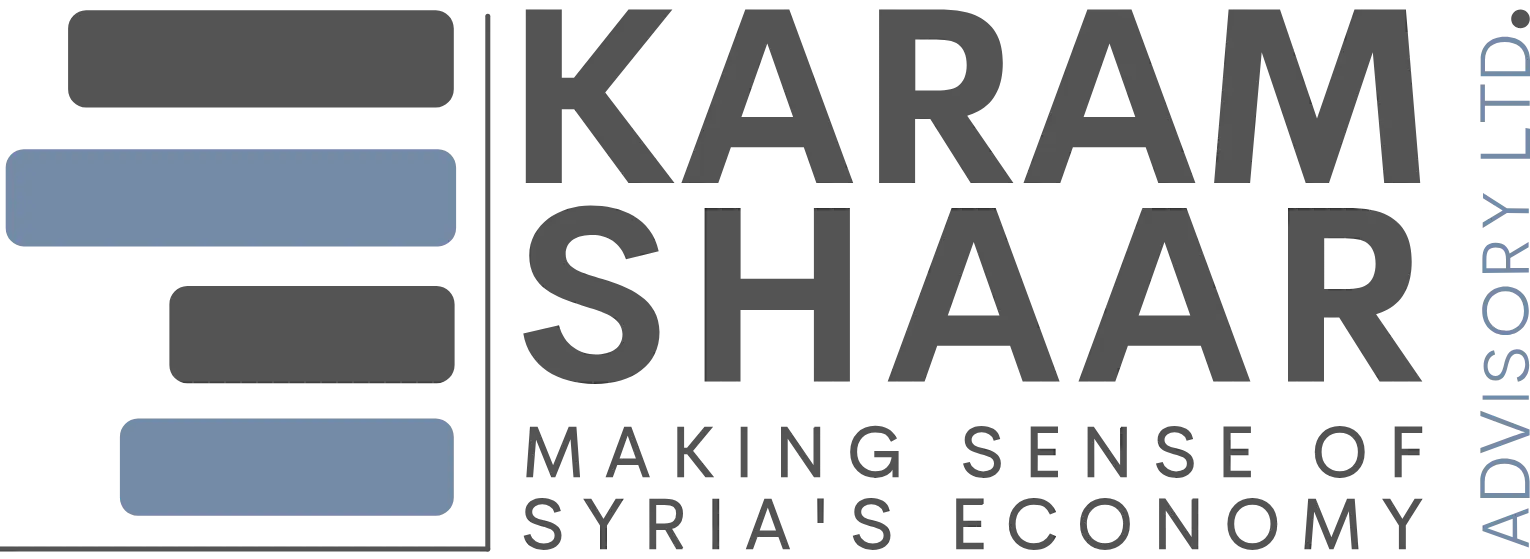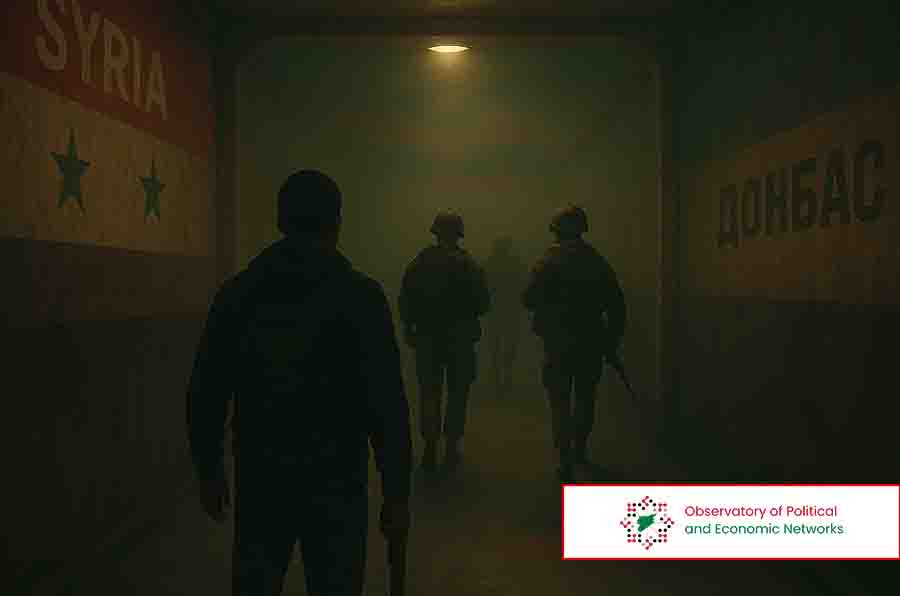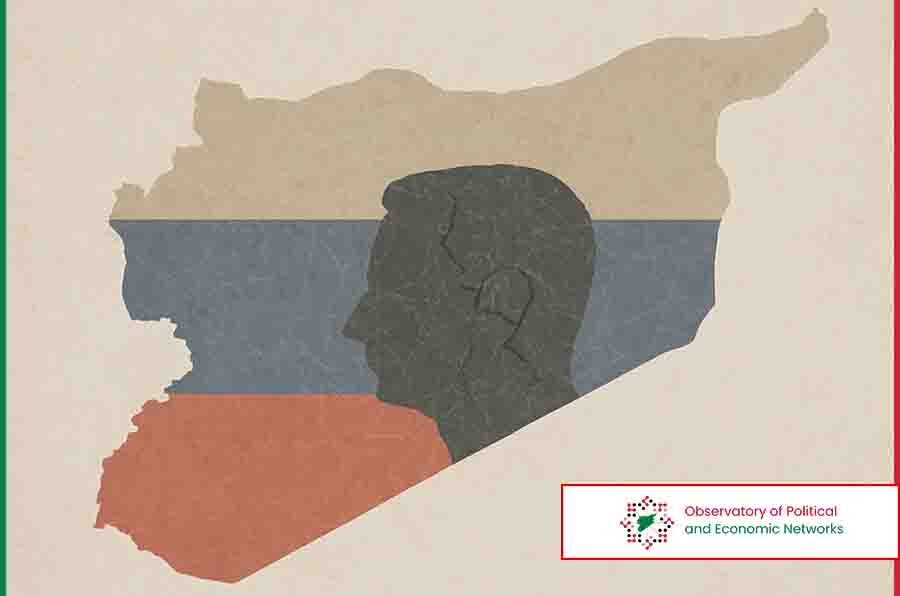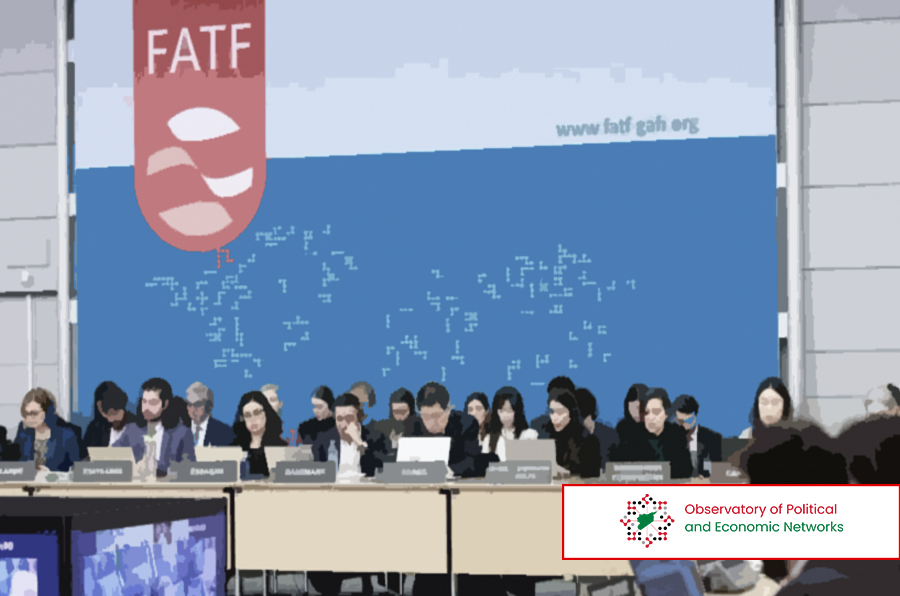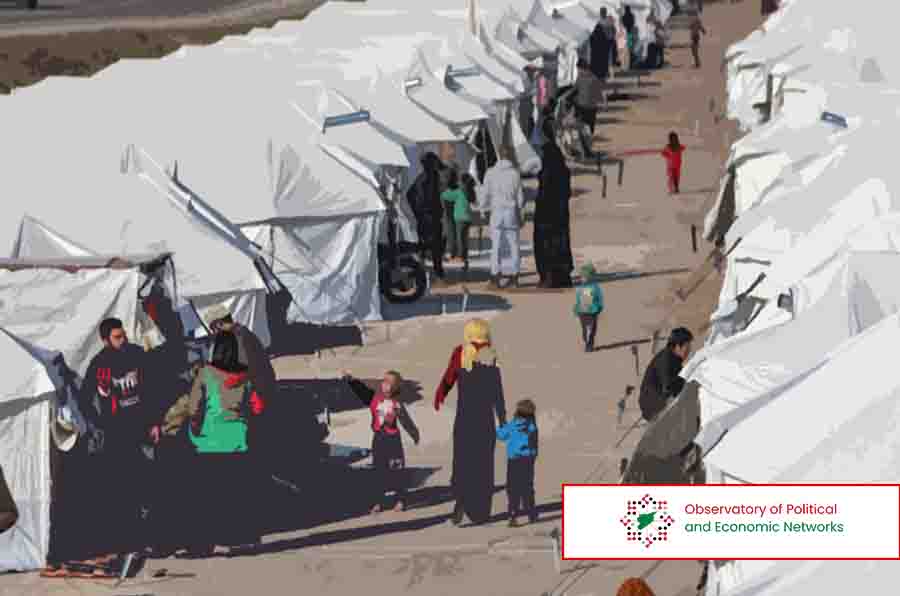Publications
Here we share all our published work, including peer-reviewed academic papers, policy papers, and op-eds.
Observatory of Political and Economic Networks, Mohammad Orwani, and Daniel Wilkofsky (April 26, 2025)
As Russia’s war in Ukraine drags on, new patterns of foreign recruitment have emerged from Syria. This report profiles three key intermediaries involved in recruiting Syrian men—often civilians and unfit for combat—for deployment to Ukraine. Based on interviews with recruits, open-source research, and field investigation, it documents recruitment methods, financial exploitation, and the broader role of intermediaries in Russia’s global efforts to source fighters. It also assesses the future of Syrian recruitment following the fall of the Assad regime.
Observatory of Political and Economic Networks, Karam Shaar, Mohammad Orwani, and Traci Lawrence (April 22, 2025)
In the decade preceding the downfall of the Assad regime, Russia’s economic influence in Syria increased significantly. By providing political and—from September 2015—military support, Russia secured leverage over Damascus and established a foothold in the energy, extractive, and security sectors. This study bridges knowledge gaps by mapping Russian economic interests, identifying key players and ultimate beneficiaries using front partners to evade scrutiny and sanctions. Using OPEN’s database, official and unofficial sources, and OSINT, the authors identify ties between 35 Russian firms and a network of 330 individuals and entities. Finally, the report summarizes the fate of these investments following the downfall of the regime.
Observatory of Political and Economic Networks, Karam Shaar, Dima Muhammad, and Dan Wilkofsky (April 12, 2025)
In the wake of the Assad regime’s collapse, the Iranian government has faced domestic criticism over its massive expenditures to prop up the Syrian dictator, even as Iranians suffered economic hardship at home. Much remains unknown to the Iranian and Syrian public and the wider world about the extent of these expenditures and what Iran received economically in return. Did Iranian state actors, or the private sector, secure lucrative investments in exchange for the Syria intervention? How much money did Iran actually spend in Syria? What will happen to the Syrian debt file and Iran’s investments now that Assad has been deposed? This report sheds light on the above questions, and others, by systematically mapping Iran’s economic activities in wartime Syria from 2011 to 2024.
Observatory of Political and Economic Networks, Vittorio Maresca di Serracapriola and Karam Shaar (Mar 28, 2025)
Karam Shaar and Vittorio Maresca di Serracapriola examine Syria’s continued gray-listing by the Financial Action Task Force (FATF) since 2010 due to strategic deficiencies in the country’s anti-money laundering and counter-terrorism financing frameworks. Although Syria completed its FATF action plan by 2014, the absence of an on-site evaluation due to citing security concerns has kept it on the gray list. This status exacerbates Syria’s financial isolation, even amid partial sanctions relief, by raising compliance costs and deterring foreign investment. The report highlights the exact areas of deficiency according to FATF’s recommendations and argues that lifting sanctions alone is insufficient to restore banking ties; instead, the Syrian Interim Government must actively engage with FATF, strengthen its AML/CFT measures, and facilitate the long-overdue on-site visit to pave the way toward financial reintegration.
Benjamin Fève, Vittorio Maresca di Serracapriola, and Karam Shaar (March 17, 2025)
On 24 February 2025, the EU enacted its most significant changes to Syria sanctions since 2011, introducing permanent exemptions and suspensions to support Syria’s transition and economic recovery after the fall of the Assad regime in December 2024. The revisions removed four public banks from the sanctions list, allowed limited transactions with the Central Bank of Syria, eased EU-Syria banking restrictions, and lifted bans on importing Syrian oil, exporting energy equipment, and investing in the power sector. Temporary humanitarian aid exemptions were made permanent, and travelers can now bring personal luxury items into Syria, though commercial sales remain prohibited. Reinstating sanctions would require unanimous EU approval, with no automatic snapbacks. However, U.S. secondary sanctions, compliance risks, Syria’s FATF gray-listing, and global “de-risking” continue to deter engagement, limiting the economic impact without broader reforms and regulatory assurances.
